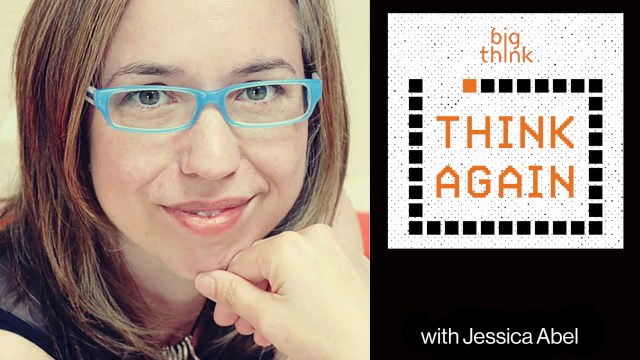How to stay healthy in middle age

I recently returned from vacation with an aching hip. Two weeks walking around Southern Europe is not my normal workout; the eight flights my wife and I endured left my body cranky. A strained glute med has me modifying my workout schedule, which is difficult considering that I teach kettlebells, ViPR, studio cycling, and yoga six days a week.
In this industry, injury discussions are common. Instructors and fitness fanatics are susceptible to overuse problems (such as a glute med strain). One colleague has dealt with this exact issue for years. The pain radiates to the hip flexor, lower back, even the opposing shoulder blade. Aging, she tells me, is no fun.
Yet, as we both know, aging has its benefits. Staying healthy into our forties (and, hopefully, well beyond) is part of the appeal of such a career. While “health” is more than exercise, movement is an important component. So when the NY Times published Your Guide to a Midlife Tuneup, this smart write-up focused on key factors for staying healthy in my age group (I’ll be 43 this month). What follows is a round-up of pertinent points.
Eat
The number one question I’m asked regards weight loss and nutrition. While many don’t like to hear it, you can’t “work off” a bad diet. The Times offers common sense advice to remind us that ground zero for good health is your plate.
Removing processed foods from your diet is of primary importance. The food industry (like the vitamin and supplements industries) enjoys practically no oversight regarding packaging rules. The term “healthy” is effectively meaningless. Purchasing whole food ingredients to cook and prepare is paramount. While “I don’t have time” is a rampant excuse, look at your time budgeting. Consider how long you spend on your phone, computer, and television. Check it against kitchen time. There is a serious imbalance in our culture.
Batch cooking is a great workaround. Every Sunday my wife and I prepare meals for the week. We roast a whole chicken and bake a half-dozen sweet potatoes or a giant tray of cauliflower and squash, all of which easily mix into salads. It’s less expensive than eating out and we know exactly what goes into each meal, something you’re often ignorant of in delis and restaurants.
The Times also lists basic (but important) practices: cutting out sugar, ramping up your nut intake, getting creative with vegetables, stop drinking your flavors. Many people don’t consider flavored water in the processed food category, but you should. The WHO recommends no more than 25 grams of added sugars per day. Most single drinks equal half to over all of that.
Move
HIIT (high-intensity training) is all the rage right now. Like all trends, there are other ways of moving your body. While I’m a big fan of HIIT, I’m also skeptical because these workouts are packaged like everything else in America: get it over as quickly as possible while maximizing benefits—a very capitalistic mindset. The number one aspect of working out has to be enjoyment. Otherwise it’s drudgery, and eventually, you quit.
Sample workouts like the one in the Times are (mostly) fine, yet it misses an essential ingredient: variety. For years I’ve watched the same members on the same machines doing the same circuits. Maintenance is better than nothing, but variety is key for physical and cognitive gains. A proper movement diet includes strength training and loading, cardio, regeneration activities like yoga, and regeneration exercises like meditation and sleeping.
The “7 Minute Workout for Real People,” besides having a snarky title, is a good start, but there is no loading. It’s a bodyweight route, which is great on some days, but external loading is important. (My favorite tools are kettlebells, ViPR, and RMT Club.) The upper body segment is all chest and triceps. What about biceps? Pulling? Hanging? Shoulders? The lower body wall sit has the character improperly flexing his upper back. Chair assisted squats are fine, but real squatting is one of the most basic movements in human history. Finally, just skip crunches. You likely flex your spine enough as it is. And as one Harvard study shows, planks are much more effective.
Recover
Sleep and meditation are two essentials that are too often overlooked. Sleeping for 7-9 hours a night is essential for most of the population. A small percentage of people can get by with slightly less, but the benefits of sleep are enormous. Cognitive and emotional problems quickly amass when sleep-deprived. Sleep medication doesn’t work. Blue lights are unhealthy. A lack of sleep leads to depression, obesity, cardiovascular problems, and numerous other issues.
The digital world might be causing a lot of problems, but it’s also solving others. For people who are intimidated by group classes, meditation and fitness apps are everywhere. Online classes can be enjoyed in real time or whenever you’d like. This is important, as instructors inspire you to partake in workouts you probably wouldn’t practice yourself. For dollars a month you can quickly find classes that cover all four movement necessities, yet apps geared toward meditation, yoga, and down-regulation are especially enticing.
Connect
I find this the most interesting aspect of the Times article. Connection is often discussed, as social media has stripped something fundamental from our civil discourse. The basic advice given—keeping phones out of your bedroom, not looking at a screen for an hour before bed,turn off phone alerts—has been around for years. Following each piece is another story.
Then the article dives deeper, suggesting you talk to your parents about their childhood, connect with teenagers, and reinvigorate your love life by seeking new experiences. These are fundamental points about the human experience. Anxiety and depression rates are rising by the year; recent data on suicide rates is troubling. We have so much at the tip of our fingers, yet we’re unhappier than ever. The math isn’t adding up.
The first step is recognizing that physical, mental, and emotional health are just different aspects of what we term “health,” not separate categories. A holistic approach to your body is required. Fortunately, this is not a ladder—you don’t master one and then move to the next. The benefits are more immediate; they also influence the other domains.
Going for a jog almost always increases positive mood. Yoga and meditation calm your nervous system. Eating a healthy meal gives your body energy. Talking through a problem, instead of avoiding the topic (or blasting out incendiary rhetoric on social media), offers fulfillment and meaning. Without meaning it’s impossible to truly feel healthy. Yet by creating your own through the steps listed above, life becomes richer. You just have to experience it to believe it.
—
Stay in touch with Derek on Facebook and Twitter.





